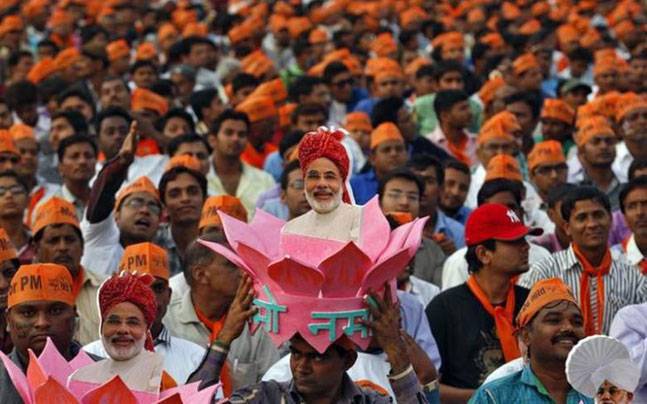By Soroor Ahmed, Twocircles.net
A bigger picture emerging after the electoral verdict of March 11, 2017, shows that it was a vote against all five state governments. Two of the chief ministers, Laxmikant Parsekar of Goa and Harish Rawat of Uttarakhand lost their seats, with the latter losing from both the constituencies.
Besides, the results implied that the Bharatiya Janata Party performed much below expectation in the states where Muslims were not at all a factor and it did exceedingly well in Uttar Pradesh and Uttarakhand, which have 19.3% and 13.9% population of the community respectively.
Whatever be the reasons, it is a fact that the anti-incumbency factor worked strongly everywhere. That is why in Goa, even the Congress managed to win more seats than the ruling Bharatiya Janata Party.
The outcome of the elections made it clear that the anger against the ruling establishment was tactfully exploited by the BJP in UP and Uttarakhand. In Uttar Pradesh, in particular, the saffron party played the caste and communal cards very well as space for it was provided by Samajwadi Party, Bahujan Samaj Party and some self-appointed Muslim leaders.
But amidst the euphoria, victorious parties in all the five states need to understand the strong undercurrent of disenchantment and resentment for the ruling parties. The electorate got an opportunity to ventilate their grievances they voted out the parties in power. So if the rival parties won in these states their victories were more by default and less by design. If people’s anger is not checked in time, more electoral upheaval cannot be ruled out in near future.
In Punjab, the saffron party and its major ally the Shiromani Akali Dal faced the same fate as Congress-Samajwadi Party combine in UP. In both states, the electorate ensured victory to a major rival party to avoid hung assembly as feared by many poll-pundits. The Aam Aadmi Party in Punjab suffered heavily in the process. Among other things drug, demonetization and plight of farmers did become election issues. It is important to note that except drug, most of the issues were common in UP too, especially, (like Punjab), in the Green Revolution region of the west, or say Jatland. Here the BJP intelligently channelised the anger towards a different direction and succeeded in putting the blame on the ruling state government.
The issue of Dalit empowerment––Arvind Kejriwal’s November 25 promise to make Dalit the deputy CM if voted to power in Punjab and Mayawati’s bid to stage a comeback––did not work as the poor lot were more interested in getting their basic problems of hunger and unemployment solved.
Goa and Manipur threw up fractured mandate as in both the places the ruling party fell short of a majority. In Goa, the opposition Congress managed to emerge as the biggest party in spite of the presence of AAP, which was initially expected to perform better. In Manipur, the opposition BJP came up from nowhere to walk away with 21 seats.
If the BJP has mastered the art of turning a disadvantage into advantage––at least in UP and Uttarakhand––the Congress has one thing to console. It has done well in Punjab and Goa though AAP was very much there to spoil its prospect. The campaign of Congress-mukt (free) India certainly received a setback.
If the descending trend of AAP continues, it may face a big challenge in the upcoming Gujarat election later this year where BJP would be feeling the heat of incumbency. Till now the saffron party is pretty comfortable that the presence of AAP may help it a lot. It is to be seen how the duo of prime minister Narendra Modi and Amit Shah perform on their home turf.

